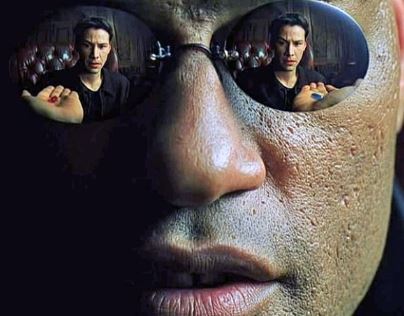

The red pill is happily swallowed and tossed away. There is big feeling here: compassion, encouragement, swells of hard-won pride. Resurrections shares the same gregarious care and enthusiasm as the Wachowskis’ Cloud Atlas and Jupiter Ascending. What sells all this is the film’s disarming earnestness, sweetly manifested by Reeves, Moss, and the rest of the genial cast. The Matrix really was about love all along. Wachowski realigns the hierarchy of her characters with triumphant defiance, asserting herself as the master of this world, as the one who gets to set its terms and invite in its desired audience of fellow positive-thinkers. Wachowski has righteousness on her mind this film is not just a reclamation, it’s a corrective. The shift befits the more sentimental tone of Resurrections. Gone is the cool metallic green of the originals, replaced by kisses of sunlight and soft blues. The aesthetic of Resurrections is overall warmer than we’re used to these films being.

Whenever the film slips into this mode, it’s as if someone has turned on the motion smoothing on a fancy high-definition television. One new technique, which sort of steps inside the franchise’s signature “bullet-time” style, is a neat idea, but the execution falters. There is plenty of action, staged with less of the canny shock of the 1999 film, but still admirable in its attempts at innovation. But the film, blessedly, is not all heady thought experiment. The new lore created by Wachowski grows ever more confusing as it goes-though maybe true devotees of the franchise will have a clearer idea of what the hell everyone’s talking about.

His unnamed therapist ( Neil Patrick Harris) works with him to manage what they both insist are delusions, while Thomas’s slick and maybe menacing business partner, played with effective purr by Jonathan Groff, urges him toward a career direction he’s reluctant to pursue. Thomas Anderson? He’s back online, living an amusingly meta existence but feeling itchy with doubt that what he’s experiencing is real. Obviously, he downs the red one.īut what of Neo, a.k.a. If he instead takes a blue pill, he will return to the simulation, living happy but deluded, a willing cog in a grand design not of his making. In The Matrix, if the messianic hero Neo ( Keanu Reeves) chooses to ingest a red pill, he is accepting the bitter reality that the world he lives in is a lie, thus gaining the strength of purest clarity. I am speaking, of course, of the red pill.
#Blue pill red pill matrix movie
In the two decades since the first Matrix movie debuted, one of its core premises has been seized upon and warped by a particular subset of noxious online culture. Those themes lead to the perhaps more pressing issue of ownership. On one hand, Resurrections is Wachowski’s chance to gripe about the economics of what she and her sister made, the way this deeply personal special-effects spectacular was long ago co-opted as a mere commodity-its ornate gunplay and slick aesthetic ruthlessly peddled while its deeper themes were cast aside. It’s a pertinent question for a number of reasons. But rather, who owns those movies and their mythology? That is, in essence, the question of Lana Wachowski’s new Matrix film, Resurrections (in theaters and on HBO Max, December 22). Who owns The Matrix? Not the computer simulation meant to keep people in a complacent stupor that’s pretty definitively owned by the sentient computers who, in Lana and Lilly Wachowski’s grand 1999 vision, have enslaved humanity.


 0 kommentar(er)
0 kommentar(er)
